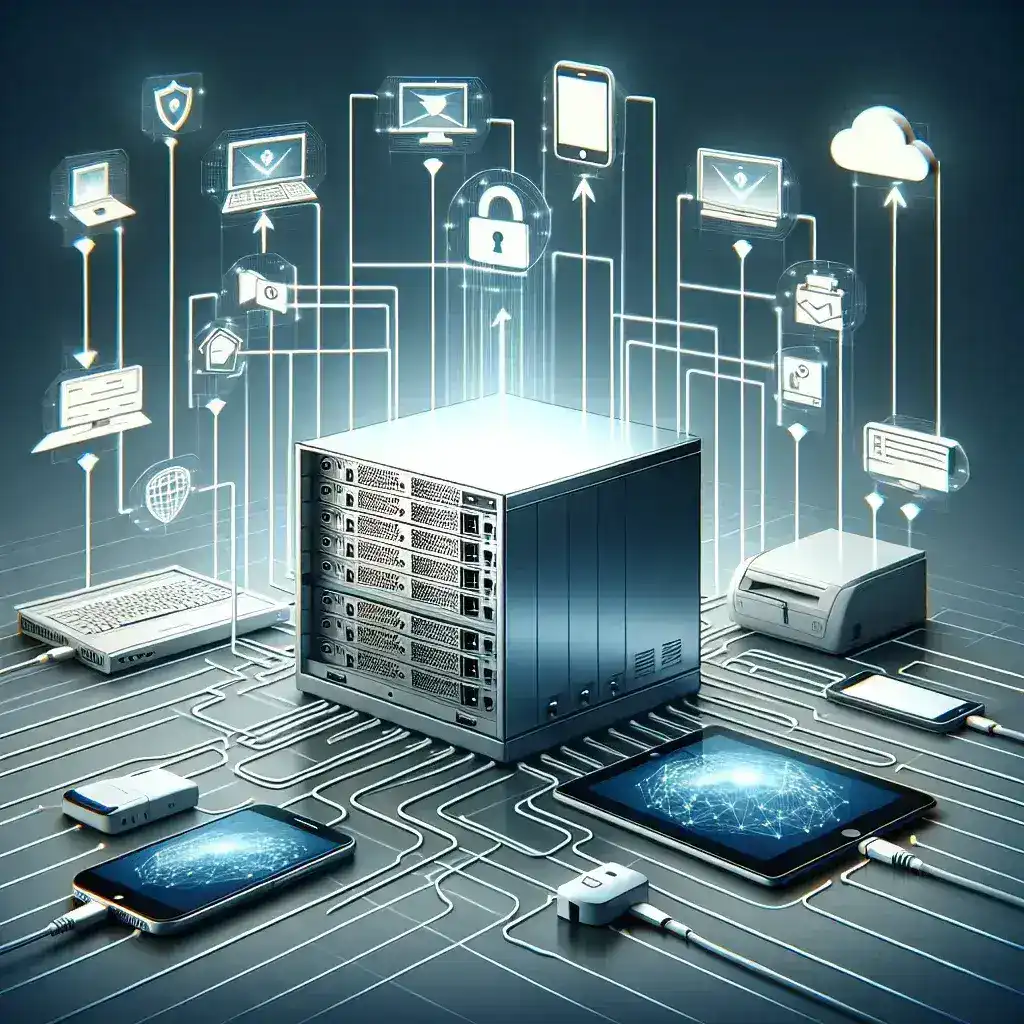A device server is a compact hardware device or software that connects serial or parallel devices to a network, allowing them to be accessed, monitored, and managed remotely. This technology bridges the gap between legacy equipment and modern network infrastructure, enhancing connectivity and efficiency.
What is a Device Server?
Device servers, often referred to as terminal servers, are crucial in the modern era of IoT (Internet of Things) and networked environments. They convert data from serial or parallel interfaces to a format that can be transmitted over Ethernet or Wi-Fi connections, enabling centralized control and monitoring. These servers can support multiple devices through a single interface, streamlining the management process.
Basic Functionality of Device Servers
- Connectivity: Device servers connect serial devices to Ethernet or Wi-Fi networks.
- Protocol Translation: They translate data formats between serial interfaces and network protocols.
- Remote Management: Allows remote access and control of connected devices.
- Scalability: Support multiple connected devices simultaneously.
Here is a table summarizing the core functions:
| Function | Description |
|---|---|
| Connectivity | Connect serial devices to Ethernet/Wi-Fi networks |
| Protocol Translation | Translate data formats between serial and network protocols |
| Remote Management | Remote access and control of connected devices |
| Scalability | Supports multiple devices simultaneously |
How Does a Device Server Work?
The functionality of a device server can be broken down into several steps:
1. Device Connection
Serial or parallel devices are physically connected to the device server using RS-232, RS-422, RS-485, USB, or parallel port connectors.
2. Data Reception
The server receives data from these connected devices. This data is initially in a format recognized by the serial or parallel interface.
3. Data Conversion
The device server then converts this data into a format suitable for Ethernet or Wi-Fi transmission. This process involves protocol translation to ensure data integrity and accessibility over the network.
4. Network Transmission
The converted data is sent over the network to a predefined destination, such as a central management system, application server, or storage service.
5. Remote Access and Management
Administrators can remotely access and control these connected devices through a web interface, command-line interface, or specialized software, allowing for monitoring, configuration, and troubleshooting.
Types of Device Servers
1. Serial Device Servers
These servers are tailored to connect serial devices like barcode scanners, PLCs, or sensors to an Ethernet network. They are commonly used in industrial automation, retail, and healthcare.
2. USB Device Servers
These are designed to share USB peripherals over a network. They allow devices like printers, storage devices, or webcams to be accessed remotely.
3. Wireless Device Servers
These utilize Wi-Fi connections to provide network access to serial or USB devices without the need for wired Ethernet connections, offering greater flexibility in device placement.
Benefits of Using Device Servers
1. Improved Connectivity
They enhance connectivity options by enabling legacy devices with serial or USB interfaces to communicate over modern networks.
2. Remote Management
With device servers, administrators can manage and troubleshoot devices remotely, reducing the need for on-site visits and speeding up response times.
3. Cost-Efficiency
By extending the life of legacy equipment and integrating them into networked environments, device servers help organizations save costs associated with hardware upgrades.
4. Scalability
Device servers can manage multiple devices concurrently, which is particularly useful in environments with a high density of connected equipment.
Applications of Device Servers
1. Industrial Automation
In factories and production units, device servers integrate PLCs, sensors, and other automation elements into a centralized control system.
2. Healthcare
Medical devices such as patient monitors or diagnostic equipment can be networked to meet compliance and monitoring requirements.
3. Retail
POS systems, barcode scanners, and printers can connect to the store’s network for improved inventory management and customer service.
4. Logistics
Device servers in logistics enable real-time tracking and management of inventory through networked sensors and RFID readers.
Key Features to Look for in a Device Server
1. Compatibility
Ensure that the device server is compatible with the types of devices you intend to connect.
2. Security
Look for features like SSL encryption, secure login mechanisms, and firewall support to protect data integrity and privacy.
3. Management Interface
A user-friendly management interface simplifies device monitoring and configuration. Consider options with web-based or centralized management software.
4. Automated Configuration
Automated device configuration features can save time and reduce the likelihood of configuration errors.
Conclusion
Device servers play a pivotal role in modern networking by enabling legacy and non-networked devices to communicate over contemporary Ethernet and Wi-Fi networks. They offer significant benefits in terms of connectivity, remote management, scalability, and cost efficiency. Whether for industrial automation, healthcare, retail, or logistics, understanding how device servers work and their various applications can help organizations make informed decisions in implementing effective network solutions.

